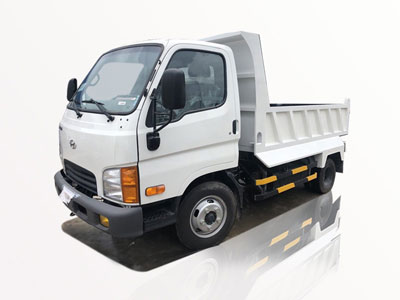Ever wondered what goes on inside a trash truck? These often overlooked vehicles are crucial for keeping our communities clean and free of waste. In this comprehensive article, we’ll take you inside a trash truck, explore its inner workings, discuss its importance, and provide practical tips for waste management. The world of waste collection is fascinating, and understanding it can help us appreciate the efforts behind it.
The Anatomy of a Trash Truck
Types of Trash Trucks
Trash trucks come in various designs and functionalities. Below are some of the most common types:
| Type | Description | Usage |
|---|---|---|
| Rear-Loader | Features a large rear compartment for waste collection. | Common in residential areas. |
| Front-Loader | Designed with a hydraulic arm for lifting containers. | Used for commercial areas with large dumpsters. |
| Side-Loader | Allows for automated collection from the side. | Efficient for residential routes. |
| Compactor Truck | Uses a compaction mechanism to reduce waste volume. | Ideal for heavy waste loads. |
Typical Components of a Trash Truck
A trash truck comprises several key components:
- Chassis: The truck’s base structure.
- Compaction System: Mechanism that compresses waste to maximize space.
- Hydraulic System: Powers the lifting and compaction devices.
- Cab: The driver’s compartment, where they operate the vehicle.
- Storage Bin: The primary area for collecting waste, varying by type of truck.
The Operation of a Trash Truck
How Trash Trucks Collect Waste
Understanding how trash trucks collect waste involves following a systematic process:
- Route Planning: Waste management companies plan efficient routes to minimize fuel consumption and time.
- Pick-Up: The driver stops at designated locations to collect waste using onboard mechanisms.
- Compaction: Waste enters the storage bin, where it is compacted to create more space.
- Transportation: Once the truck reaches its capacity, it heads to a disposal site.
Challenges Faced by Trash Trucks
Despite their essential role, trash trucks face several challenges:
- Traffic Congestion: Delays during collection can lead to missed pickups.
- Weather Conditions: Heavy rain or snow can complicate operations.
- Container Accessibility: Tight spaces and poorly placed bins can hinder efficient collection.
Life Inside a Trash Truck
The Driver’s Experience
Driving a trash truck is not just about controlling the vehicle; it involves multiple responsibilities:
- Safety: Drivers must be aware of pedestrians and vehicles.
- Vehicle Maintenance: Routine checks ensure the truck operates efficiently.
- Customer Interaction: Drivers often communicate with residents about waste collection schedules and rules.
Inside the Cab: Technology and Tools
The cab of a trash truck is equipped with various tools and technologies:
- GPS Navigation: Helps optimize routes for increased efficiency.
- Onboard Computer: Tracks collection data and vehicle performance.
- Two-Way Radio: Enables communication with the waste management team.
Waste Management Practices
Best Practices for Decluttering Your Home
Maximizing your waste management efforts starts at home. Here are some practical examples:
- Regular Decluttering: Schedule monthly clean-ups to reduce clutter.
- Donate: Give away items you no longer need to local charities.
- Recycle: Ensure recyclable items are sorted and placed in designated bins.
Effective Recycling Programs
Many communities have implemented effective recycling programs, which include:
| Recyclable Item | Collection Frequency | Common Contaminants |
|---|---|---|
| Plastics | Weekly | Food waste, bags not marked for recycling |
| Paper | Bi-weekly | Wet paper, colored paper |
| Metal | Monthly | Food residue |
Environmental Impact of Trash Trucks
Emission Control and Sustainability Efforts
Modern trash trucks are becoming more eco-friendly through:
- Alternative Fuels: The adoption of compressed natural gas (CNG) reduces emissions.
- Electric Trucks: Electric waste collection vehicles are being tested in some cities.
- Reduced Noise Pollution: Many companies are investing in quieter vehicles to minimize noise disruption.
Community Initiatives for Waste Reduction
Engagement at the community level is essential for effective waste reduction:
- Educational Programs: Workshops on recycling and waste management can raise awareness.
- Community Clean-Up Days: Organizing events encourages collective participation.
- Promoting Composting: Encouraging residents to compost organic waste reduces landfill contributions.
Future of Trash Trucks
Technological Innovations
The future of waste collection is bright, with innovations on the horizon:
- Smart Sensors: Provide data on bin fullness, optimizing collection routes.
- Automated Collection Systems: Use robotics for efficient waste handling.
- Blockchain for Waste Management: Enables better tracking of waste disposal and recycling.
Adapting to Urban Challenges
As cities grow, so do the challenges for waste collection. Future trash trucks may need to address:
- Increased Waste Volume: Larger capacities or more frequent pickups.
- Smarter Routes: Utilizing AI to navigate urban environments more effectively.
- Public Transporation Integration: Coordination with other city services to streamline waste management.
FAQs About Trash Trucks
Frequently Asked Questions
1. What is the typical lifespan of a trash truck?
The average lifespan of a trash truck is about 10 to 15 years, depending on maintenance and usage.
2. How does waste get compacted in a trash truck?
Most trash trucks are equipped with hydraulic systems that compress waste into a smaller volume for efficient storage.
3. Can I put hazardous waste in my trash can?
No, hazardous waste should be disposed of through specialized collection programs, as it can be detrimental to human health and the environment.
4. What happens to trash after it leaves my home?
Trash is transported to a landfill, recycling center, or waste-to-energy facility, where it undergoes processing or disposal.
5. Are there laws governing trash collection?
Yes, waste management is regulated at local, state, and federal levels to ensure public health and environmental protection.
6. How can I reduce the amount of waste I produce?
Consider adopting practices like reducing single-use plastics, recycling, composting, and donating items you no longer need.





